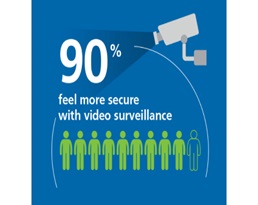March Networks, a provider of intelligent IP video solutions, has announced the results of an independent survey that examines how fraud, customer service and security perceptions are impacting banking consumer decisions in the United States. Key results from the survey, commissioned by March Networks and conducted by market research firm Ipsos earlier this year, reveal that 15% of consumers experienced fraudulent bank account activity in 2016.
Banks and credit unions responded successfully, however, with 85% of those consumers saying they were satisfied with how their financial institution handled the incident.
Survey results also show that a continued focus on customer experience remains critical for banks and credit unions when it comes to retention, with 1 in 5 respondents (and a higher 1 in 4 Millennials) confirming they have switched banks in the past because of poor in-branch service. In addition, banking choices are influenced by how secure consumers feel when conducting transactions, either in their local branch, at an ATM or online. A majority of consumers (98%) felt most secure when conducting transactions at their local banking branch, compared with 92% when conducting transactions online and 85% using a mobile phone app. Moreover, 90% of consumers said they feel safer when they can see video surveillance cameras in their bank or credit union, and would choose a financial institution with surveillance over one without, all other things being equal.
Other key findings from the survey include:
• Nearly half of consumers said waiting more than 5 minutes for service is unreasonable
• While poor customer service was the top reason consumers switched to a new bank, other drivers included the
branch nearest them closing (14%), fraudulent bank account activity (9%) and safety concerns (9%)
• Half of consumers walked away from an ATM without conducting their intended transaction because someone
was loitering in the vestibule
• 90% of consumers think that visible surveillance cameras help deter crimes
• 60% of consumers noticed a fraudulent transaction before their financial institution, leaving plenty of
opportunity for banks and credit unions to be more proactive when it comes to identifying and notifying
customers about potential fraud








